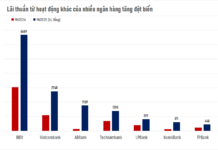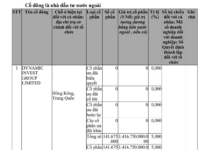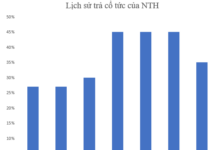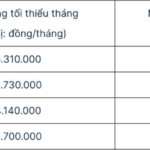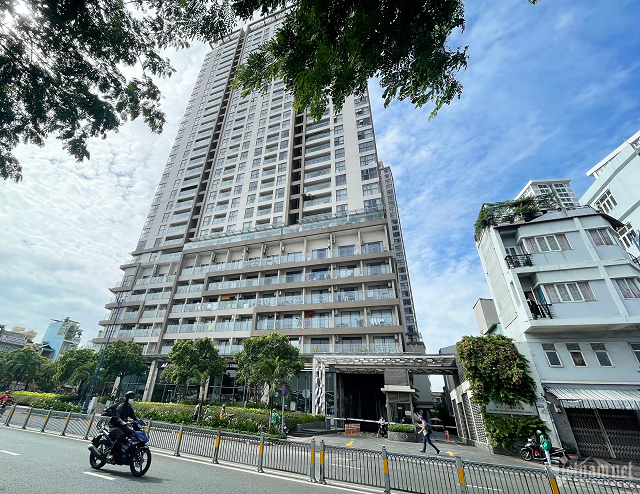This is the pivotal moment where creativity, knowledge, and global value chain connectivity take center stage, enabling the nation to surpass the middle-income trap and solidify its position in the global supply chain.
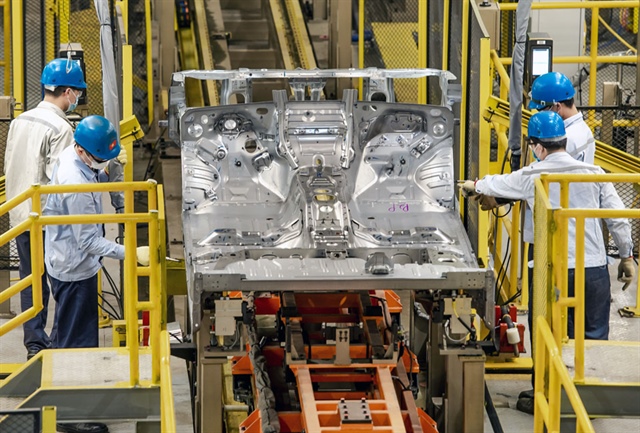
Unlocking domestic potential requires recognizing the central role of the private sector. Image: Source |
Double-Digit Growth: Opportunities and Pressures
The goal of achieving a GDP growth rate of 10% or higher is a significant challenge, reflecting both the aspirations and responsibilities of Vietnam amidst a volatile global economy.
From a macroeconomic perspective, Dr. Lê Duy Bình, Director of Economica Vietnam, notes that despite numerous shocks over the past five years, Vietnam has maintained a robust growth rate, exceeding 6.5% in many years and even surpassing 8% at times. “This demonstrates the strengthening of the economy’s intrinsic capabilities and resilience,” he remarks.
According to Dr. Bình, with a stable macroeconomic foundation, political stability, and investor confidence, the outlook for 2026 is promising and could surpass this year’s performance, although reaching 10% remains a challenge. The primary growth drivers are exports, supported by global monetary easing trends, particularly in the U.S. The normalization of Vietnam-U.S. trade relations regarding tariffs is further expanding bilateral trade. The total import-export turnover for this year is projected to reach $800-850 billion, reflecting strong competitiveness and international trust.
Public investment is the second pillar, with improved disbursement rates and several major infrastructure projects nearing completion. Private investment and FDI are rebounding strongly due to legal reforms and Resolution 68, which revitalizes business spirit. Increased FDI disbursement and a rise in new and reactivated businesses indicate very positive signals.
Domestic consumption, with retail sales and service revenue growing by 9-11%, remains a crucial driver. However, Dr. Bình cautions that 2026 growth also depends on managing risks related to monetary policy, inflation, public debt, and transitioning to a more efficient and sustainable growth model rather than merely expanding scale.
Broadly speaking, Vietnam is poised to benefit from the global supply chain shift. FDI investors seeking alternatives to China present an opportunity for Vietnam to attract capital, technology, and management expertise. This is a gateway for Vietnamese private enterprises to surge ahead, provided they have the capability to integrate more deeply into the global value chain.
Unlocking Domestic Potential: The Central Role of the Private Sector
Dr. Huỳnh Thanh Điền from Nguyễn Tất Thành University believes the 10% target is ambitious yet achievable if Vietnam leverages the right drivers. He notes that FDI continues to flow strongly into Vietnam due to political stability, competitive costs, and its strategic position in the global supply chain. Exports maintain their expansion momentum thanks to an extensive network of FTAs, while public investment and domestic consumption are being ramped up, creating growth opportunities for the private sector.
However, Dr. Điền warns of significant challenges, including low localization rates and weak linkages between FDI, private enterprises, and the state sector. “These three streams still operate as separate entities. Without clear coordination mechanisms and shared benefits, the economy will lack intrinsic momentum,” he analyzes.
According to him, Vietnam currently needs not just acceleration but also restructuring for sustainable development, based on an autonomous industrial foundation and global value chain connectivity, particularly “elevating” private sector development.
Echoing this view, Mr. Lê Mai Hữu Lâm, CEO of Cát Vạn Lợi Industrial Electrical Equipment Production JSC, emphasizes that sustainable growth must rely on the internal strength of Vietnamese enterprises, not solely on public investment or FDI.
Mr. Lâm points out that the private sector remains weak, with several months of export declines, and most businesses operate as family-run entities lacking long-term strategies and R&D capabilities. “Without investment in science, education, and management innovation, breakthroughs will be difficult,” notes the CEO of Cát Vạn Lợi, a supplier to numerous FDI companies and infrastructure projects such as metros, airports, and power plants domestically and internationally.
Land and loan costs are also significant barriers, with industrial land rents in Củ Chi reaching $250/m² for 50 years, undermining production competitiveness. “Many opt for financial investments instead of building factories,” he illustrates.

Enhancing value chain connectivity, innovation, and workforce development is essential. Image: Source |
Mr. Lâm highly values the government and Vietnam Young Entrepreneurs Association’s program to train 10,000 entrepreneurs, fostering modern leadership with an understanding of international rules. “You can’t sail a boat to the open sea. Business owners must change first for organizations to transform,” he stresses.
For Dr. Điền, achieving 10% growth requires economic policies that “activate” rather than “control,” allowing the private sector to invest and innovate while supporting technology and high-value-added product development. When these forces converge, with private enterprises boldly investing and stronger linkages between FDI and domestic companies, the economy will gain powerful momentum.
“Liberating” Growth Potential
Experts agree that rising labor costs, resource depletion, and sustainability demands compel Vietnam to seek new drivers. Instead of “quantity-based growth,” Vietnam must shift toward “quality-based growth” by increasing localization rates, deeper global value chain integration, developing indigenous technology, and fostering high-quality human resources.
Economist Dr. Lê Đăng Doanh emphasizes that to surpass current limits, Vietnam must enhance internal capabilities, develop domestic enterprises, promote digital transformation, and apply advanced technologies in production.
Administrative reforms, reduced red tape, anti-corruption measures, e-government development, and a digital economy are crucial for creating a transparent and efficient business environment. Simultaneously, improving workforce quality, encouraging innovation, technological advancements, and building a national brand are essential to enhance product value.
According to Mr. Phạm Xuân Hồng, Chairman of the Ho Chi Minh City Textile and Garment Association, the private sector can play a pivotal role if supported correctly. In the textile industry, private enterprises account for 80% of the scale and are key players but face significant pressures from capital, land costs, and land taxes.
Mr. Hồng stresses: “If the government provides preferential credit, land tax deferrals, and infrastructure expansion, just 80% of these private entities growing further could significantly contribute to achieving the 10% growth target.”
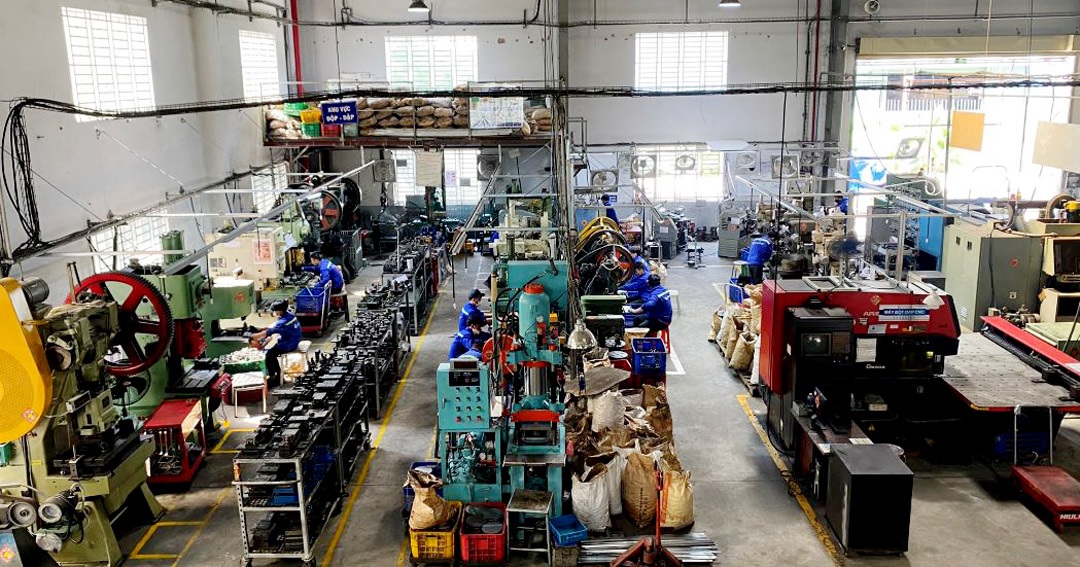 Supporting private enterprise development is crucial. Image: LH
|
Analysts note that to achieve 10% GDP growth, investment rates must reach 40-45% of GDP, FDI should account for 6-10% of GDP, exports need to grow by 15% annually, and labor productivity must increase by 7-9% annually. These are high targets requiring comprehensive solutions: expanded credit, infrastructure development for electricity, roads, stations, digital infrastructure, and technology innovation support for businesses.
Beyond textiles, sectors like electronics, mechanics, logistics, and high technology also need prioritization as they can generate significant value-added and deeper global value chain integration. Linkages between FDI and domestic enterprises in these sectors will determine the success of the 10% leap.
Overall, Vietnam needs a journey to awaken its intrinsic potential, where the three forces (private sector, FDI, and state) are connected and synergized. When this becomes a reality, 10% growth will be a tangible leap, reflecting creativity, management capabilities, and Vietnam’s intrinsic strength.
Dr. Điền emphasizes controlling speculative capital flows and redirecting funds into real production and business activities. When capital is properly directed, private enterprises will boldly invest, FDI and domestic companies will collaborate more closely, and the economy’s momentum will be unleashed. “When these forces converge, the 10% target will no longer be a distant dream but a real leap for Vietnam.”
Double-digit growth is a challenge but also an opportunity to innovate models, develop the private economy, foster creativity, and enhance productivity. Intrinsic momentum, technology, workforce quality, and synergy between the private sector, FDI, and state are key.
With these pillars aligned, Vietnam will not only achieve its two-digit GDP target but also lay a solid foundation for sustainable growth, transforming aspirations into a powerful leap to escape the middle-income trap.
Lê Hoàng
– 07:00 14/11/2025
Vingroup Unveils School Electric Bus Equipped with Advanced Student Monitoring Technology
Every school electric bus is equipped with 19 seats and advanced safety monitoring systems to ensure a secure and comfortable journey for all passengers.






